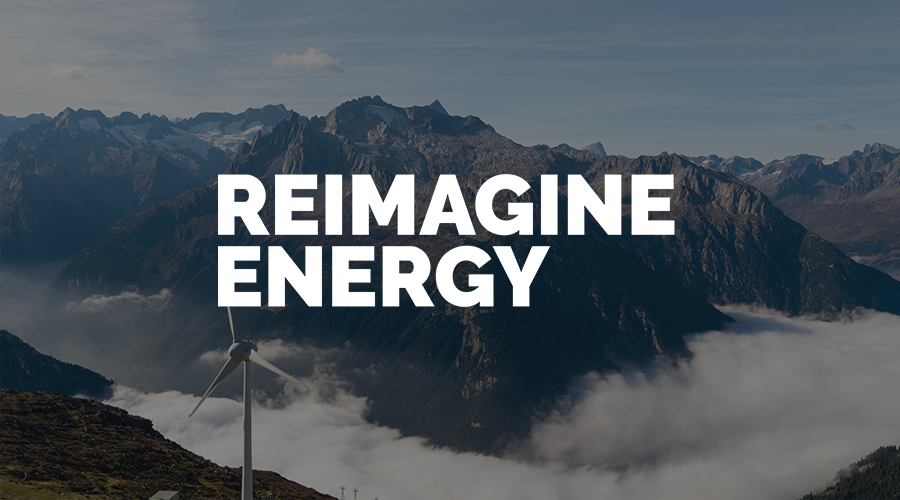The third edition of our magazine Reimagine Energy focuses on e-mobility, a key pillar of a net-zero economy. We spoke to Michael Lehmann of MITNETZ Strom about the opportunities and challenges of e-mobility for regional grid management and customers.
MITNETZ Strom is the largest regional distribution network operator in eastern Germany and is responsible for the planning, operation and commercialization of the grid. In its immediate grid area, energy generation from renewables exceeds energy demand, making grid regulation complex.
“We see e-mobility and stationary energy storage as an opportunity, because flexible battery storage systems allow wind and solar power to be used locally in our grid.”
Michael Lehmann, Head of Process and IT Management at Meter2Cash at MITNETZ Strom
Michael Lehmann Background
- PhD in the field of fuel cell research at Jülich Research Centre in 1999
- Worked with the enviaM group since 1997, currently with MITNETZ Strom IT-manager for market processes Helping to shape market processes for the German electricity and gas markets Leading project NetzFlex, together with Kiwigrid
What is the new NetzFlex project?
“Due to our large share of renewable energy in the grid, we regularly have significant surpluses of electricity that we must deliver to the transmission grid instead of consuming locally. We are talking about 5 billion kWh per year. That amount of electricity could supply around 1.7 million EVs with locally generated green electricity all year round.
Therefore, we see e-mobility and stationary energy storage as an opportunity, because flexible battery storage systems allow wind and solar power to be used locally in our grid. The effect is twofold. More clean electricity is used sensibly, while at the same time our grids and transmission systems are relieved. With NetzFlex we want to realize this potential.”
How does the new NetzFlex tariff work?
“We have created a tariff that is an incentive for customers with flexible consumers, such as EVs, to use local and green electricity. For example, there is a low-cost tariff in times of high wind or solar power generation, and a correspondingly high tariff when the grid is subject to high demand and no renewable energy is available. The tariff times are published the day before, so that smart consumers can optimize their demand. With Kiwigrid, we have developed the NetzFlex API for this purpose. It provides customers with important grid information such as the CO2 footprint of their electricity and the tariffs for the following day. At the same time, the interface provides an intelligent reservation system for flexible consumers to ensure optimal utilization of the local grids. This will stabilize the grid and help customers make better use of renewable energy.”
Why did you decide to introduce NetzFlex?
“In the past, many network operators have used direct controller interventions to access customers’ devices, such as heat pumps for example. This protected the local grids and created an incentive to use the inflexible base load electricity from lignite and nuclear energy. We now have a situation in which we must rebalance generation and consumption. The big difference, however, is that grid operators such as ourselves no longer want to control things from our side. It is pointless, for instance, to access a wall box for an EV when the customer is just charging from their solar battery. We want to leave the decisions to the customers. And that means leaving it to their smart devices to make the right decisions.”
Why now?
“Firstly, the technology is available now. We can carry out measurements in low voltage and use interfaces to smart devices.
Also, in 2020 legislation will create the legal framework for flexible consumers in low voltage, such as EVs and heat pumps. With our project, we want to show where the journey is headed and make sure that the legal framework is open to such innovations.”
How effective is the regulatory framework? What incentives should be created?
“At present, many things are possible and some network operators are very creative in designing the networks of the future. But we must ensure, not least in the interests of our customers, that the technology is used in a customer-oriented and pragmatic manner. In this respect, the Act on the Digitization of the Energy Transition is not perfect. Improvements will be necessary.
However, the greatest challenge for the regulatory framework is yet to come. When EVs will be able to transport and feed back electricity to the grid on a large scale – Vehicle to Grid technology – then many things will no longer work as they do today. We are looking forward to these exciting times!”
What benefits do you hope to gain from offering NetzFlex?
“The electrification of transport and heat is a great opportunity for us as grid operators. We are happy to transport the necessary energy via our networks. The challenge, however, will be to use existing networks wherever possible and only expand networks in exceptional cases. NetzFlex is one of our most important approaches in this respect and we are convinced that it will ensure very efficient grid operation.”
